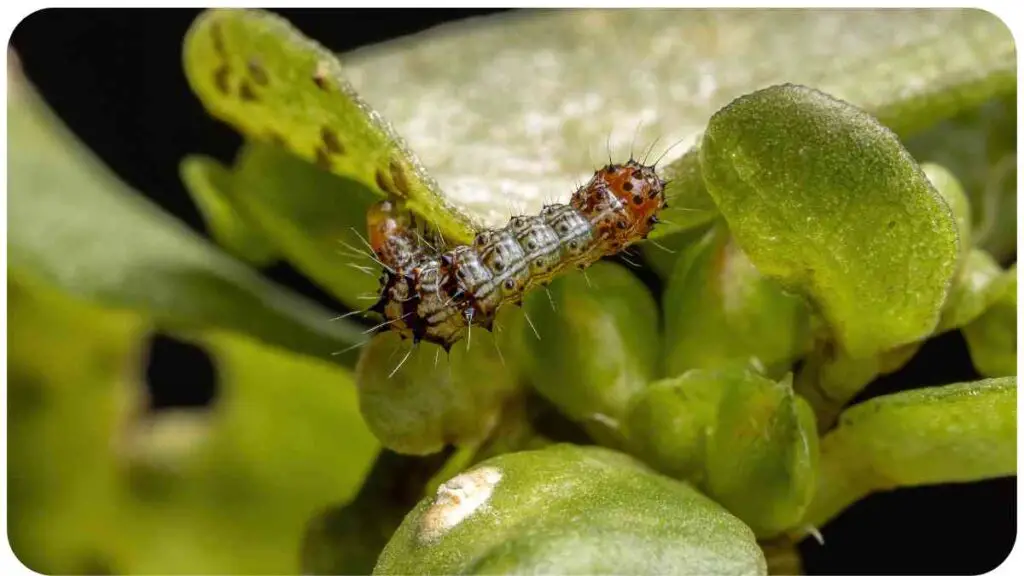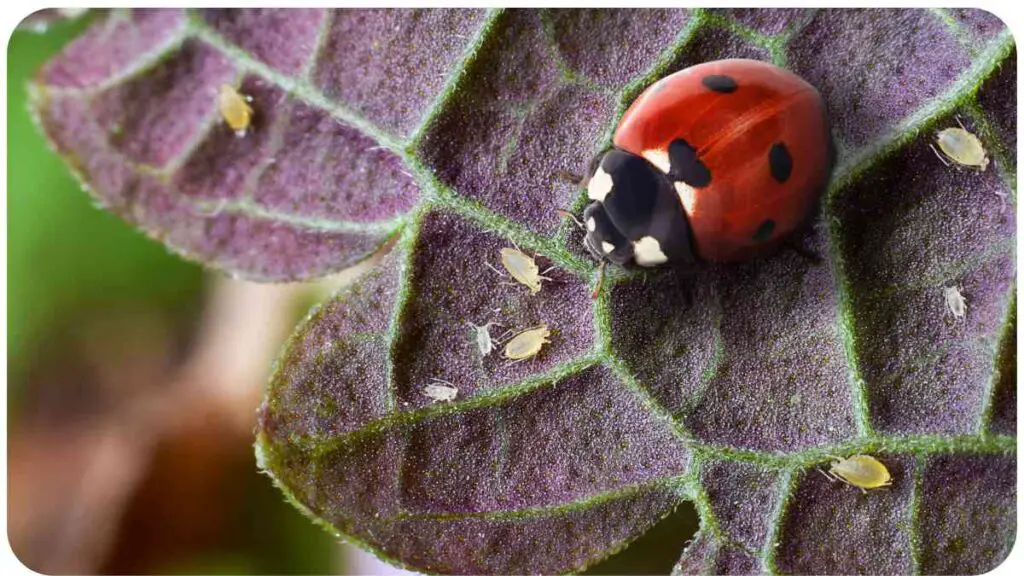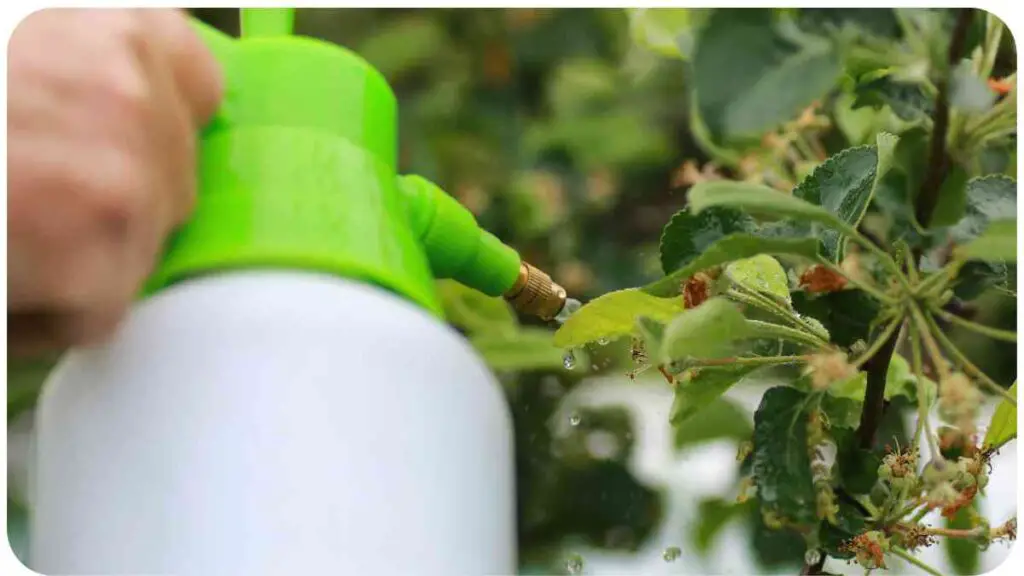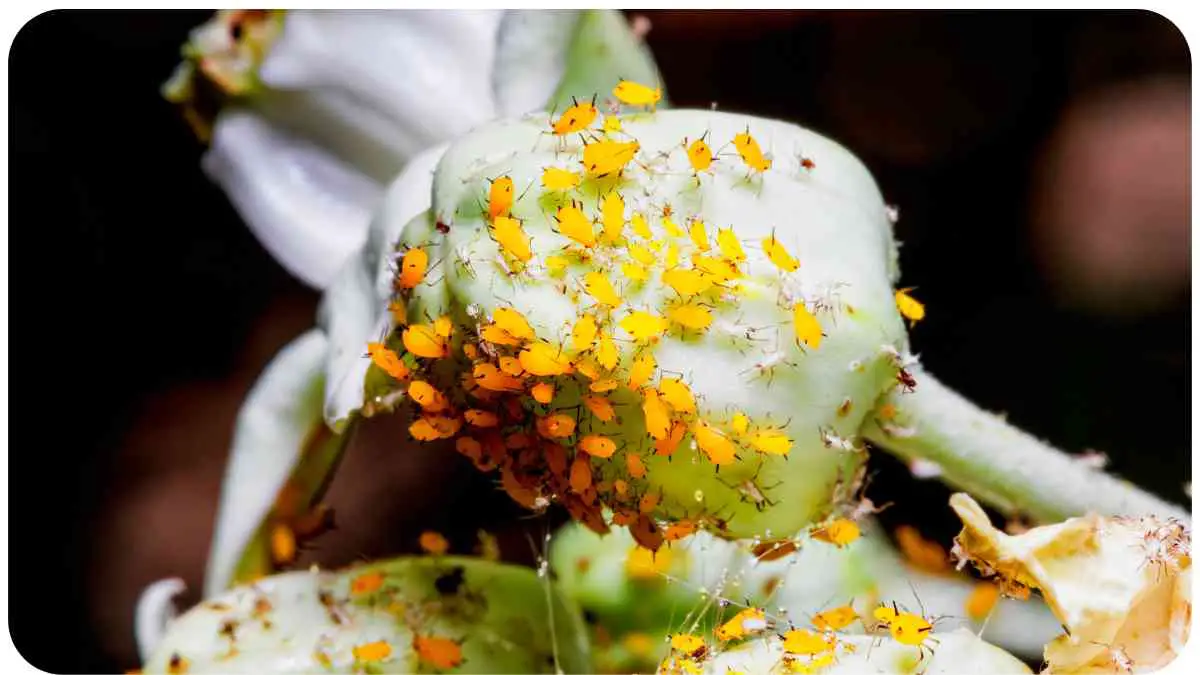House plants not only add aesthetic appeal to our homes but also contribute to a healthier indoor environment by purifying the air. However, it can be distressing to discover tiny bugs crawling around our beloved greenery.
In this article, we’ll delve into the world of common houseplant pests, particularly focusing on tiny bugs, exploring their identification, causes, effects, prevention, and control methods.
| Key Takeaways |
|---|
| 1. Regularly inspect houseplants for signs of pest infestations. |
| 2. Implement preventive measures such as proper watering and sanitation to deter houseplant bugs. |
| 3. Utilize natural remedies like neem oil and insecticidal soap for eco-friendly pest control. |
| 4. Consider chemical treatments only as a last resort and use them cautiously according to instructions. |
| 5. Maintain healthy houseplants through adequate lighting, pruning, and proper plant care practices. |
Understanding Common Houseplant Pests

Before we delve into the specifics of tiny bugs, let’s briefly discuss common houseplant pests. These unwelcome visitors can include insects, mites, and even fungal organisms. They thrive in the warm, humid conditions often found indoors and can quickly infest house plants if left unchecked.
To maintain healthy houseplants, it’s crucial to prevent root rot. Ensure proper drainage and avoid overwatering. Regularly inspect roots and repot when necessary. For comprehensive guidance, check out this comprehensive guide on preventing root rot.
Table 1: Common Houseplant Pests
| Pest | Description |
|---|---|
| Aphids | Small, soft-bodied insects that suck sap from plant stems and leaves, causing wilting. |
| Spider Mites | Tiny arachnids that create fine webbing on plant surfaces and feed on plant juices. |
| Mealybugs | Soft-bodied insects covered in a white, cottony substance, often found in leaf axils. |
| Fungus Gnats | Small, dark flies that lay eggs in moist potting soil, with larvae feeding on plant roots. |
Now that we have a general understanding of common houseplant pests, let’s zoom in on tiny bugs and how to deal with them effectively.
Identifying Tiny Bugs in House Plants
Tiny bugs in house plants can vary in appearance, behavior, and the type of damage they cause. Identifying these pests accurately is crucial for implementing the appropriate control measures.
Table 2: Types of Tiny Bugs Found in House Plants
| Bug | Description | Common Locations |
|---|---|---|
| Thrips | Small, slender insects with fringed wings, often found on the undersides of leaves. | Foliage, Flowers |
| Whiteflies | Tiny, white insects that resemble small moths, typically found on the undersides of leaves. | Leaves, Stems |
| Scale Insects | Small, round or oval insects that attach themselves to plant surfaces and feed on sap. | Stems, Leaves |
| Springtails | Tiny, jumping insects that thrive in moist soil and organic matter, often seen hopping around the base of plants. | Potting Soil, Leaf Litter |
By familiarizing yourself with the characteristics and typical locations of these tiny bugs, you can quickly identify and address any infestations in your house plants.
Now, let’s explore the reasons behind these pesky bugs taking up residence in our indoor greenery.
Keeping indoor plants healthy involves more than watering and sunlight. Proper pest management is essential to ward off tiny bugs. Learn about effective solutions in this comprehensive guide on plant sprays and treatments.
Causes of Infestations
Understanding the underlying causes of tiny bug infestations in house plants is essential for effective pest management. Several factors can contribute to the proliferation of these pests.
Table 3: Causes of Tiny Bug Infestations
| Cause | Description |
|---|---|
| Overwatering | Excess moisture in the soil creates ideal breeding conditions for pests like fungus gnats and springtails. |
| Poor Air Circulation | Stagnant air encourages the buildup of humidity, which attracts pests and promotes the spread of infestations. |
| Infested Plants | Bringing in new plants without proper inspection can introduce pests into your home environment. |
| Stressed Plants | Weak or stressed plants are more susceptible to pest attacks, as they may lack the resilience to fend off invaders. |
| Lack of Maintenance | Neglecting regular plant care tasks such as pruning, cleaning, and repotting can lead to pest problems over time. |
Identifying the root causes of infestations allows you to address them effectively and implement preventive measures to safeguard your house plants.
Next, let’s explore the potential effects of tiny bugs on the health and vitality of our indoor greenery.
Effects of Tiny Bugs on House Plants

Tiny bugs in house plants can wreak havoc on their health and appearance if left unchecked. Understanding the potential effects of these pests is crucial for early detection and intervention.
Did you know praying mantises can benefit your indoor plants? These natural predators help control pests without harmful chemicals. Discover more about their role in indoor gardening in this insightful article about praying mantises.
Table 4: Effects of Tiny Bugs on House Plants
| Effect | Description |
|---|---|
| Leaf Damage | Pests like thrips and whiteflies feed on plant sap, causing stippling, yellowing, and distortion of leaves. |
| Stunted Growth | Continuous feeding by pests can impede the plant’s ability to absorb nutrients and grow, resulting in stunted growth. |
| Wilting and Drooping | Severe infestations can lead to wilting and drooping of leaves as pests deplete the plant’s resources. |
| Transmission of Diseases | Some pests, like aphids and whiteflies, can transmit viral and fungal diseases, further compromising plant health. |
| Decreased Flowering/Fruiting | Pest damage may reduce the plant’s ability to flower or produce fruit, impacting its ornamental or edible value. |
By monitoring your house plants regularly for signs of pest activity and promptly addressing any infestations, you can minimize the detrimental effects on plant health.
Now, let’s explore various prevention and control methods to manage tiny bugs in house plants effectively.
Prevention and Control Methods
Preventing and controlling tiny bugs in house plants requires a combination of proactive measures and targeted interventions. By implementing these strategies, you can minimize the risk of infestations and maintain the health of your indoor greenery.
Table 5: Prevention and Control Methods for Tiny Bugs in House Plants
| Method | Description |
|---|---|
| Inspect New Plants | Before introducing new plants into your home, thoroughly inspect them for signs of pest infestation. |
| Isolate Infested Plants | Quarantine plants suspected of being infested to prevent the spread of pests to other plants. |
| Improve Air Circulation | Increase airflow around plants by using fans or opening windows to reduce humidity and deter pests. |
| Avoid Overwatering | Allow the top layer of soil to dry out between waterings to discourage pests like fungus gnats. |
| Remove Infested Plant Parts | Prune and discard heavily infested leaves or stems to prevent pests from spreading further. |
In addition to these preventive measures, there are various natural and chemical treatments available for managing tiny bugs in house plants. Let’s explore these options in more detail.
Natural Remedies for Tiny Bugs in House Plants
Natural remedies offer effective and eco-friendly solutions for controlling tiny bugs in house plants. These methods harness the power of natural ingredients to repel or eliminate pests while minimizing harm to the environment and beneficial insects.
Nobody wants unwanted guests like cockroaches invading their indoor plants. Learn effective strategies for keeping them out in this informative guide on cockroach prevention. Protect your plants and maintain a healthy indoor environment.
Table 6: Natural Remedies for Tiny Bugs in House Plants
| Remedy | Description |
|---|---|
| Neem Oil | Derived from the neem tree, neem oil acts as a natural insecticide and disrupts the life cycle of pests. |
| Diatomaceous Earth | Made from fossilized remains of diatoms, diatomaceous earth is a natural powder that damages pests’ exoskeletons. |
| Pyrethrum Extract | Extracted from chrysanthemum flowers, pyrethrum is a natural insecticide effective against a wide range of pests. |
| Garlic and Chili Pepper Spray | A homemade spray made from garlic and chili peppers can deter pests with its strong odor and repelling properties. |
These natural remedies offer safe and effective alternatives to chemical treatments, providing peace of mind for indoor gardeners concerned about the health and well-being of their plants and environment.
While natural remedies can be highly effective, some situations may require the use of chemical treatments to address severe infestations. Let’s explore these options next.
Chemical Treatments for Tiny Bugs in House Plants

In cases of severe infestations or when natural remedies prove insufficient, chemical treatments may be necessary to effectively manage tiny bugs in house plants. It’s essential to use these products judiciously and according to the manufacturer’s instructions to minimize risks to human health and the environment.
Table 7: Chemical Treatments for Tiny Bugs in House Plants
| Treatment | Description |
|---|---|
| Insecticidal Soap | A mild, soap-based solution that suffocates and disrupts the cellular structure of pests upon contact. |
| Horticultural Oil | An oil-based spray that coats and suffocates pests while also disrupting their feeding and reproductive systems. |
| Systemic Insecticides | Chemicals absorbed by the plant’s vascular system, providing long-lasting protection against pests. |
| Botanical Insecticides | Derived from plants, these insecticides contain natural compounds that target and kill pests on contact. |
Before resorting to chemical treatments, consider their potential impact on beneficial insects, pets, and the environment. Always follow label instructions carefully and consider less toxic alternatives whenever possible.
Now that we’ve explored both natural and chemical treatment options, let’s discuss some essential tips for maintaining healthy house plants and preventing future pest infestations.
Tips for Maintaining Healthy House Plants
Maintaining healthy house plants is key to preventing pest infestations and ensuring the longevity of your indoor greenery. By following these essential tips, you can create an optimal environment for your plants to thrive while minimizing the risk of tiny bug infestations.
Wondering when it’s time to repot your houseplants? Timing is crucial for the health and growth of your plants. Find out the best times and methods for repotting in this guide on repotting houseplants. Ensure your plants thrive with proper care.
Table 8: Tips for Maintaining Healthy House Plants
| Tip | Description |
|---|---|
| Provide Adequate Light | Place your house plants in locations with appropriate lighting conditions according to their specific needs. |
| Water Properly | Avoid overwatering or underwatering by adhering to the watering requirements of each plant species. |
| Monitor for Signs of Pests | Regularly inspect your plants for signs of pest activity, such as unusual spots, webs, or insect sightings. |
| Prune and Clean Regularly | Remove dead or damaged foliage, clean dust off leaves, and sanitize pots to prevent pest harborage. |
| Promote Healthy Growth | Use high-quality potting soil, fertilize plants as needed, and provide adequate air circulation to promote growth. |
| Rotate Plants Periodically | Rotate plants periodically to ensure balanced growth and prevent pests from targeting specific areas. |
By incorporating these tips into your plant care routine, you can create an environment that is less conducive to pest infestations and more conducive to the health and vitality of your house plants.
In conclusion, while encountering tiny bugs in house plants may be concerning, it’s essential to address infestations promptly and effectively. By understanding common pests, implementing preventive measures, and utilizing appropriate control methods, you can maintain healthy indoor greenery and enjoy the beauty of your plants for years to come.
Conclusion
Tiny bugs in house plants can be a nuisance, but with the right knowledge and proactive approach, you can effectively manage and prevent infestations. By understanding common pests, identifying potential causes of infestations, and implementing preventive measures, you can create an environment that is less hospitable to pests and more conducive to the health and vitality of your indoor greenery.
Natural remedies offer eco-friendly alternatives to chemical treatments, providing safe and effective solutions for controlling pests without harming beneficial insects or the environment. However, in cases of severe infestations, chemical treatments may be necessary, albeit with caution and adherence to safety guidelines.
In addition to pest control measures, maintaining healthy house plants through proper watering, lighting, pruning, and sanitation practices is essential for preventing future infestations and promoting optimal plant growth and resilience.
By incorporating these tips into your plant care routine and staying vigilant for signs of pest activity, you can create a thriving indoor garden that brings beauty and joy to your home while minimizing the risk of pest-related issues.
Further Reading
Here are some additional resources for further information on managing and preventing houseplant bugs:
- Types of Houseplant Bugs: This comprehensive guide explores the various types of bugs that can infest houseplants, providing detailed information on identification and control methods.
- How to Kill Houseplant Bugs: This article offers practical tips and advice for effectively eliminating houseplant bugs using natural and chemical treatments, ensuring a pest-free indoor garden.
- Dealing with Gnats in Houseplants: Learn how to deal with pesky gnats in your houseplants with this informative guide from Better Homes & Gardens. Discover the causes of gnat infestations and effective control methods to keep your plants healthy.
FAQs
What are some common signs of houseplant bug infestations?
Common signs of houseplant bug infestations include visible insects on plant foliage, yellowing or distorted leaves, sticky residue on leaves, and fine webbing on plant surfaces.
How can I prevent houseplant bugs from infesting my plants?
To prevent houseplant bug infestations, inspect new plants before bringing them indoors, maintain proper watering and sanitation practices, and avoid overcrowding plants to promote good airflow.
What are some natural remedies for controlling houseplant bugs?
Natural remedies for controlling houseplant bugs include neem oil, insecticidal soap, diatomaceous earth, and garlic-chili pepper spray, which can effectively repel or eliminate pests without harming plants.
Are chemical treatments safe for houseplants?
When used according to label instructions, chemical treatments such as insecticidal soap and horticultural oil are generally safe for houseplants. However, it’s essential to follow safety precautions and avoid overuse to prevent damage to plants.
How often should I inspect my houseplants for signs of bug infestations?
It’s recommended to inspect your houseplants regularly, ideally once a week, to detect any signs of bug infestations early on and take appropriate action to prevent them from spreading.

For 15 years, Hellen James has worked in the gardening industry as an expert and landscape designer. During her career, she has worked for a variety of businesses that specialize in landscaping and gardening from small firms to large corporations.

